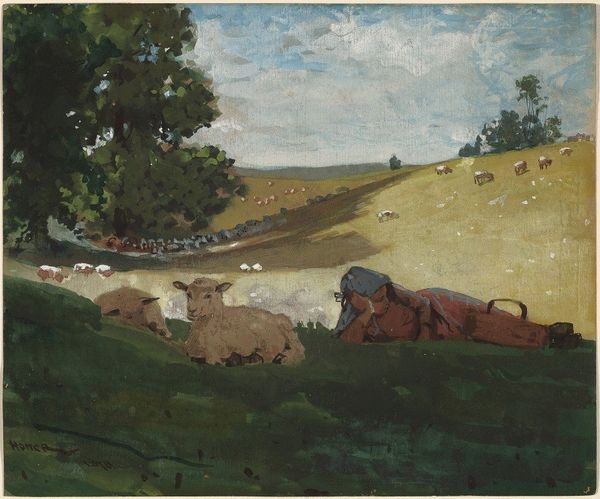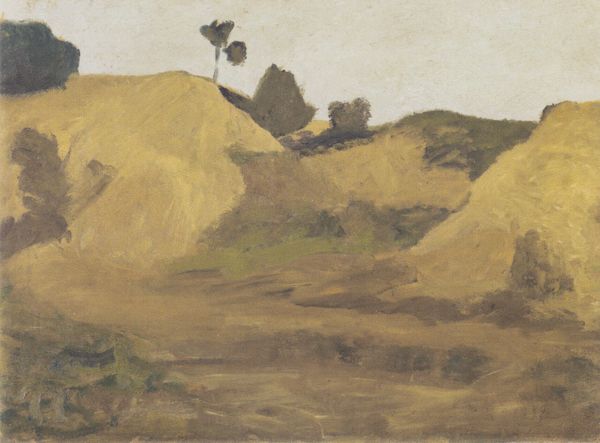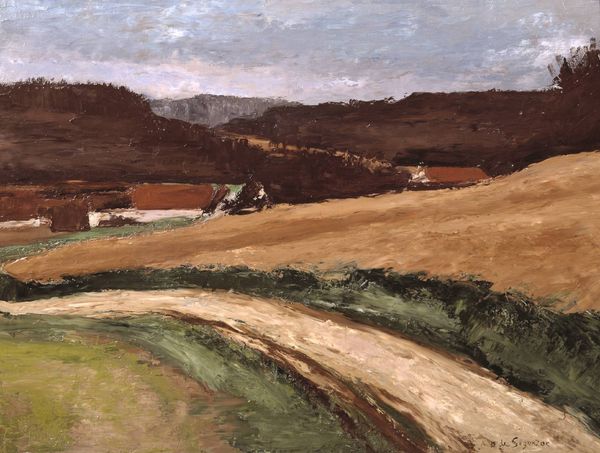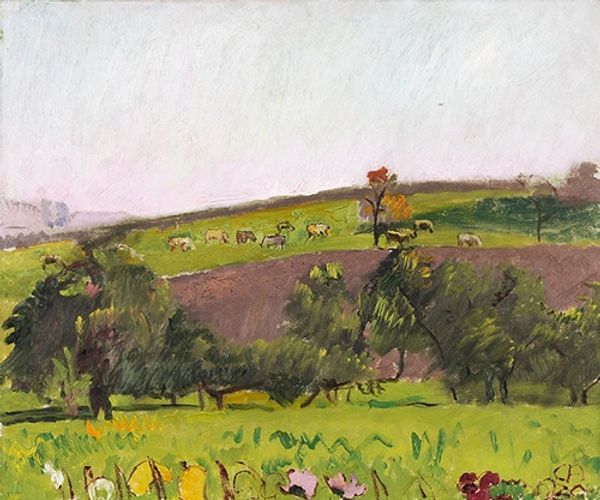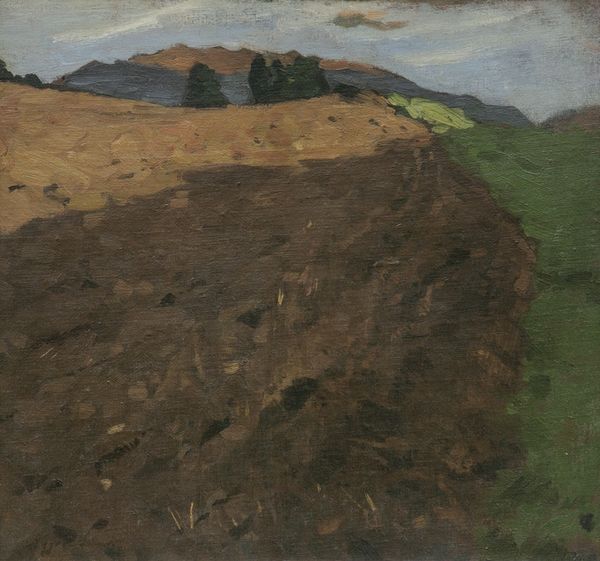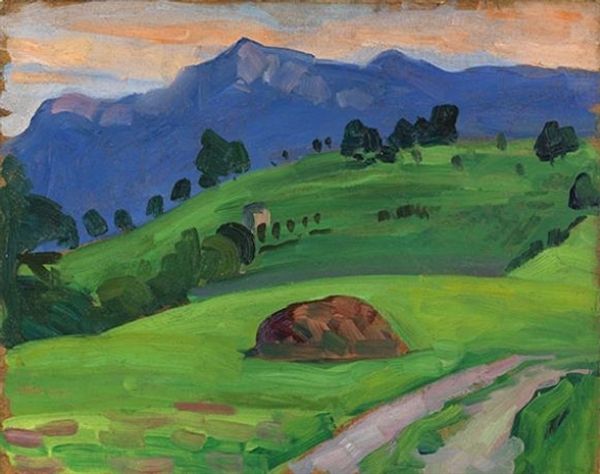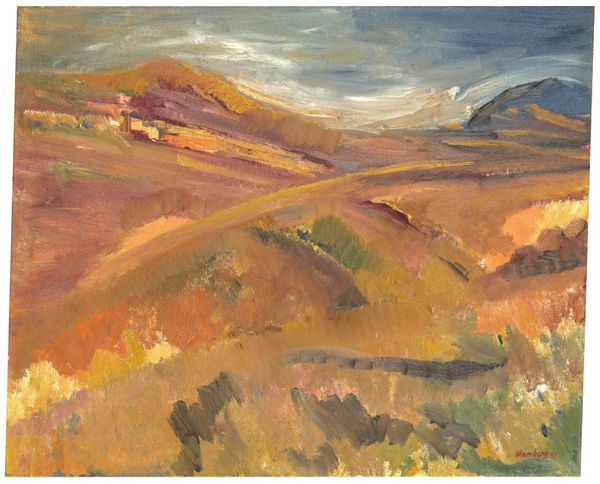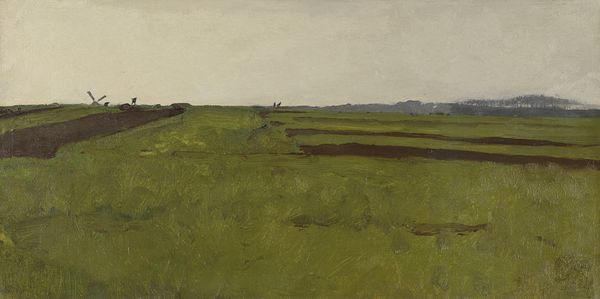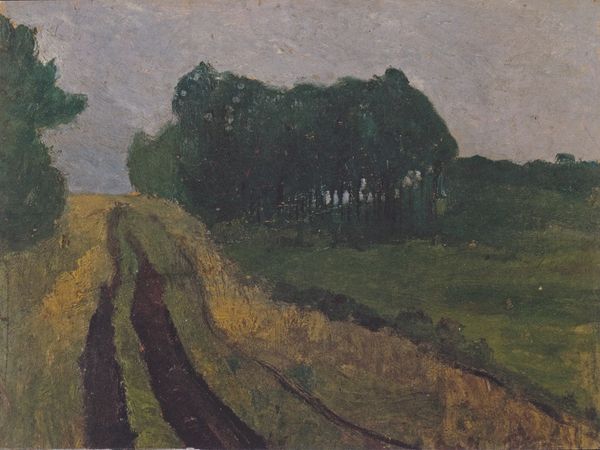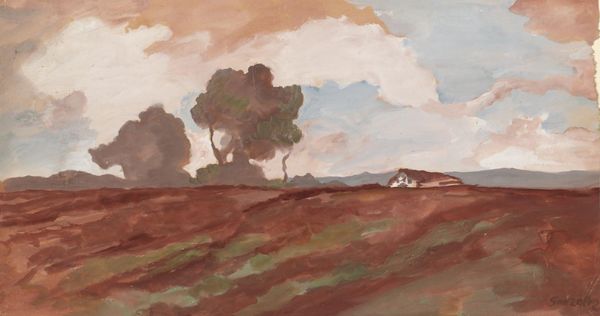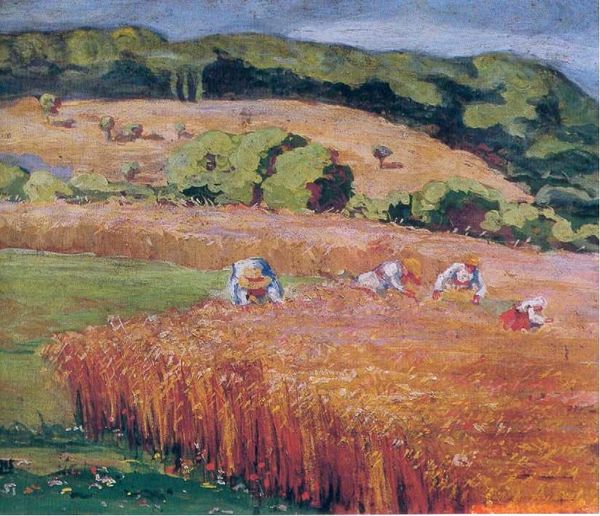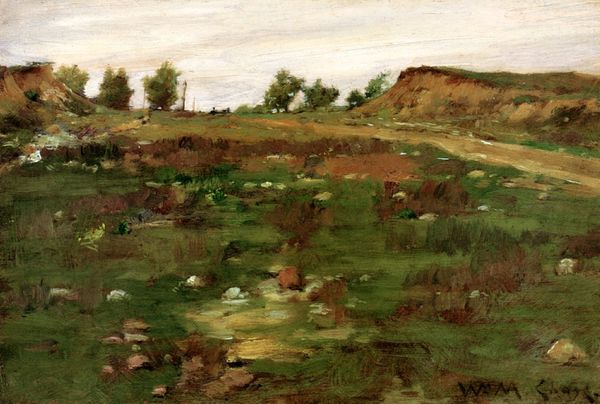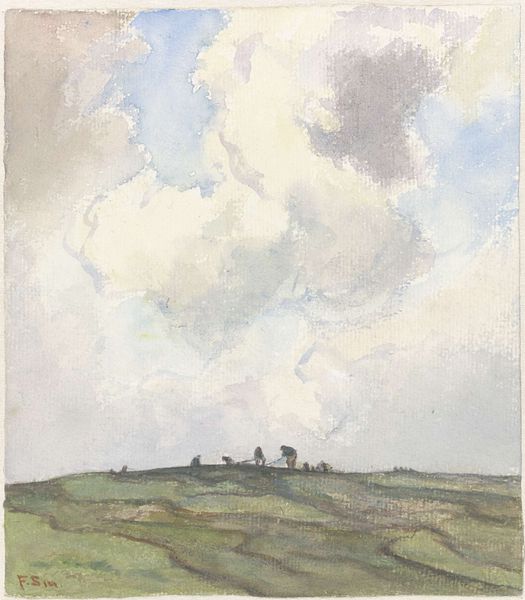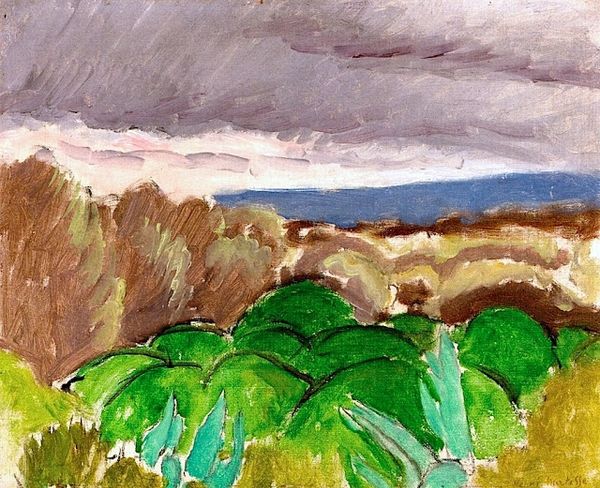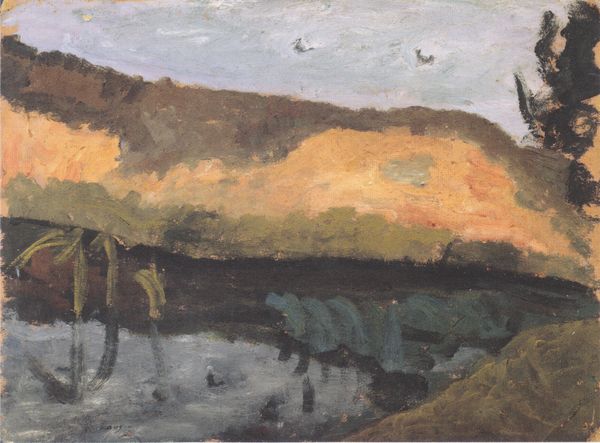
Copyright: Public Domain: Artvee
Editor: This is Winslow Homer's "The Green Hill," painted in 1878, in watercolor. The color palette is pretty subdued, a lot of browns and greens, which I find makes it feel peaceful and reflective. What strikes you when you look at this? Curator: What jumps out is Homer's choice of watercolor in depicting rural America. We often forget that watercolor wasn't always seen as serious art. It was for sketching, for the amateur. Here, Homer uses it to depict everyday life, blurring the lines between high art and craft, isn't it? Consider the social context: Who typically used watercolor, and why? Editor: That's interesting! I hadn’t thought about the social implications of the medium itself. It was maybe more accessible than oil paints, so maybe something regular people did? Curator: Exactly! And what did that say about art and representation? Homer democratizes art, in a way, making visible the tools, the labor involved. How does the choice of "plein-air," painting outdoors, contribute to that, you think? Editor: It’s almost like he is capturing the real experience, like laboring outside. The accessibility of watercolor along with being in the landscape, both make the painting more approachable to viewers. I learned a lot! Curator: Indeed, it challenges the boundaries between elite art production and everyday experiences through his selection of material. Food for thought, right?
Comments
No comments
Be the first to comment and join the conversation on the ultimate creative platform.
